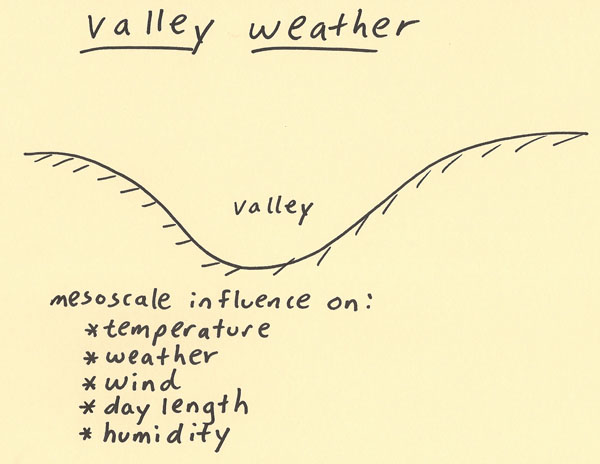
Interesting mesoscale influences occur in a valley. Variations in temperature, weather, wind, day length and humidity can occur. The temperature is often warmer during the day in the valley since the elevation is lower. Air that sinks into the valley will also warm due to adiabatic descent. During the night, the opposite can occur. Since colder air is denser it will have a tendency to sink to the lower elevations in the valley. If the higher elevations are orientated so that they block the early morning and late afternoon sun, this can result in longer nights and cooler temperatures. Interesting weather features can occur in the valley. Since a river or stream often flows through a valley, this increases the moisture. This combined with cooler temperatures at night can result in valley fog and clouds. If an inversion is in place, the fog, clouds and/or smog can persist in the valley during the day. Strong wind events can occur in a valley. The valley can funnel air just like what happens when air flows between buildings. This can result in stronger wind events in the valley than what is experienced in surrounding areas. The orientation of the higher elevation areas can significantly influence the day length in the valley. If the higher elevations run east-west then the sun rise and sun set will not be blocked as much. However, if the higher elevations run north-south, then this can significantly decrease the amount of time that the sun can directly shine on the valley. Thus, north-south running valleys have the potential to be significantly colder than east-west running valleys. As mentioned, the humidity can be higher in the valley since often streams converge and flow through the valley region. This can increase the type, variety and density of plants in the valley region. It can also lead to more fog events than what is experienced at the surrounding higher elevations.  |